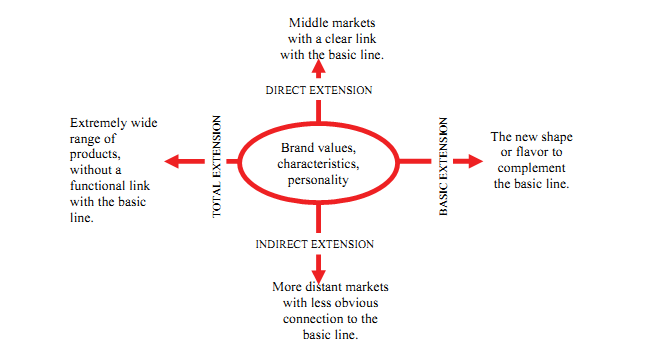L’Oreal Brand Extension Strategy in the Connected TV Technology
Introduction
Connected TV is a term used to describe the integration of internet features into television sets. In the past decade, technological convergence between TVs and computers has significantly increased. IKEA and Target are some of the new entrants in the connected TV sector. Connected TVs often focus more on online interactive media rather than focusing on convention broadcasts, such as previous television sets (Technology, 2011). Most multinational companies are well aware that their business’s leading role in the international market is sustained by established brands that help acquire loyal clients.
Therefore, launching a new product using a brand extension strategy assists the company establish a strategic market position in an economy that demands constant adjustments and responses to emerging trends.
Following the current trend in content production whereby programming is being offered by non-conventional sources such as Red Bull, Lego, IKEA and Target, L’Oreal can develop itself in the connected TV technology by exploring different network operators. L’Oreal is one of the world’s largest beauty and cosmetic companies. Like IKEA and Target, L’Oreal can adopt a brand extension strategy that aims at benefiting from the brand knowledge already achieved in its current market. According to most researchers, the cost of marketing and failure rates are significantly reduced when a company launches a new product under the umbrella of a well-known brand (Media, 2010).
This paper aims at discussing how a multinational brand such as L’Oreal can develop itself in the connected TV technology. The first section will explore brand extension strategies while the second section will evaluate the performance of these strategies. The third section will identify the superlative extension strategy in terms of performance. Finally, the paper will offer a comprehensive SWOT analysis.
Brand Extension Strategies
According to most researchers, brand extension is positively influenced by the parent brand (Bermingham, 2011). L’Oreal has strategically positioned itself in the global market with its range of beauty and cosmetic products. The company may use brand extension as a marketing strategy, a move that has become more attractive in the modern economy since developing a new product is costly and consumes a lot of time. Brand extension can be an important aspect during the brand management process. There are various brand extension strategies that L’Oreal can implement. One of them is capitalizing the extended brand on the equity of the already established parent brand. This strategy’s success is based on the fact that consumers are already familiar with the existing parent brands, which significantly helps a new brand to enter the market (Group, 2011). The strategy also assists the extended brand to capture new market segments.
Capitalizing the extended brand on the equity of the parent brand is a strategy that is highly beneficial. This is because market research on the new product is significantly reduced, as well as, the advertising costs. The strategy also has a higher chance of success because of the superior preference derived from the parent brand’s equity. The majority of brand extension strategies usually produce reciprocal effects that enhance the overall equity of the core brand. The global market is viewed as a place whereby competition and introduction costs of new brands increases the risk of failure. As a result, many companies use brand extension to enter new markets. Research has shown that in the past decade more companies have preferred to extend their brand rather than introduce a new product under a new brand name. Market research concludes that brand extensions are evaluated favorably by customers since consumers tend to transfer the positive attributes of the core product of the extended brand (Handout, 2010).
The choices of the brand extension strategy will help the company determine the level at which it can extend the brand. Before L’Oreal extends into the connected TV sector, it has to answer the following questions. First, would the brand extension strategy remain consistent with the company’s vision strategy? Secondly, will the selected brand extension strategy improve the parent brand’s image? Finally, will the brand extension strategy remain consistent with the company’s brand positioning strategy? These issues will assist L’Oreal to identify some of the impacts the brand extension will have on the brand (Harris, 2009).
Some of the possible directions of brand extension include Taylor’s model of consumer brand extension. This model has contributed to numerous researches in brand extension strategies and provides useful information on how extension constructs influence the overall attitude of consumers toward the extended brand. The diagram below illustrates that brand extension strategies usually come in two forms, horizontal and vertical (Harris, 2009).

In a horizontal brand extension, an existing brand name is applied into a new product. The introduction can be a related product class, which is also known as basic extension, or it can be in a product category that is new to the company, which is also referred to as total extension. There are different technologies that offer solutions for connected TV for different markets and commercial models (Hem, 2009). L’Oreal would first have to select the preferred brand extension strategy before choosing a network proviidder who would offer such technologies in the connected TV sector. The diagram above also shows a vertical brand extension. This extension strategy entails the introduction of a new brand in the same product category as the parent brand. However, the extended brand is usually at a different price category and quality level also referred to as direct extension. The product category may have less connection to the basic product line known as indirect extension.
Over the past few years, the connected TV market has emerged into the mainstream forcing network providers to establish forums that offer support for critical players driving the sector. Currently, there are hundreds of companies delivering innovative software and online services, hence, it is very important for the connected TV sector to come together to share insight and network. L’Oreal can use some of the forums that are designed to accelerate market research and bring critical players together to drive the connected TV sector forward (Lane, 2011).
L’Oreal has two possible options in entering the connected TV sector using the vertical brand extension strategy. First, the brand extension may be introduced at a lower price and lower quality level as compared to the parent brand. A second brand name can also be introduced alongside the parent brand with the aim of demonstrating the link between the brand extension and the core brand name. L’Oreal brand extension into the connected TV sector will significantly aid in generating acceptance by linking the new brand with the already known company name. However, brand extension also risks diluting the parent brand’s image by harming the equity built within the parent brand name (Lock, 2011).
The greatest risk during brand extension is fading of the original personality of the core brand. When L’Oreal is deciding on the brand extension, it has to consider the following: first, the location at which to expand the brand. This will involve identifying new markets and reaching new customers. Second, the company should decide on what product to expand. It may choose to offer related or unrelated products and services under the same core brand in new or existing markets. Finally, L’Oreal will have to identify how to expand the connected TV brand. L’Oreal can expand the brand independently or collaboratively with an already established business in the connected TV sector. Researchers use the categorization theory when exploring the effects of brand extension (Manning, 2000). According to the theory, when consumers are forced to choose from thousands of products, they tend to categorize such products through their brand association given their previous experience (Media, 2010).
Most literature has shied away from the negative effects of brand extensions. As a result, most people find no significant evidence that a brand name can be diluted by unsuccessful brand extensions. However, research has shown that a parent brand can be diluted when the extension is inconsistent with the product category and brand beliefs (Nakamoto, 2009). The overall equity of L’Oreal can be diluted from functional or non functional base variables whereby, dilution occurs across the extended brand all the way to the core brand. Brand extension failures make consumers create a negative or new association that is related to the core brand, which eventfully distorts the identity and meaning of the original brand. Connected TVs provide content from other computers or networks either through Digital Living Network Alliance or Network attached storage (Virakul, 2011). The performance of L’Oreal’s brand extension strategy will be significantly affected by the reliability of the network provider.
Brand Extension Strategies Performances Evaluation
This section will offer a comprehensive analysis of the different strategies built up by competitors such as IKEA, Target, Red Bull, and Lego in extending their advertisement policy on the connected TV market. Evaluating the performance of some of the brand extension strategies used by these competitors will assist in understanding how a multinational brand such as L’Oreal can develop itself in the connected TV technology. Through performance evaluation, multinationals are able to investigate the impact of product similarity, brand reputation, as well as, the perceived risk and consumer innovativeness on the success of brand extensions.
IKEA brand extension strategy focused on leveraging the company’s brand equity on the new connected TV services. However, Red Bull and Target chose a different brand extension strategy. Instead of relying only on brand equity, Red Bull and Target launched themselves in the connected TV market through strategic partnerships with network providers. Strategic partnership enables a firm to launch itself in a new market. Both Red Bull and Target also leveraged their Brand equity with the connected TV since extensions on categories that are more similar to the original brand usually tend to be more readily accepted (Vukasovič, 2010). Therefore, the reputation of the original brand is a significant factor that influences the success of the extension. However, the perceived risk on the extension category usually enhances the acceptability of extensions for durable goods and service brands…

Leave a Reply